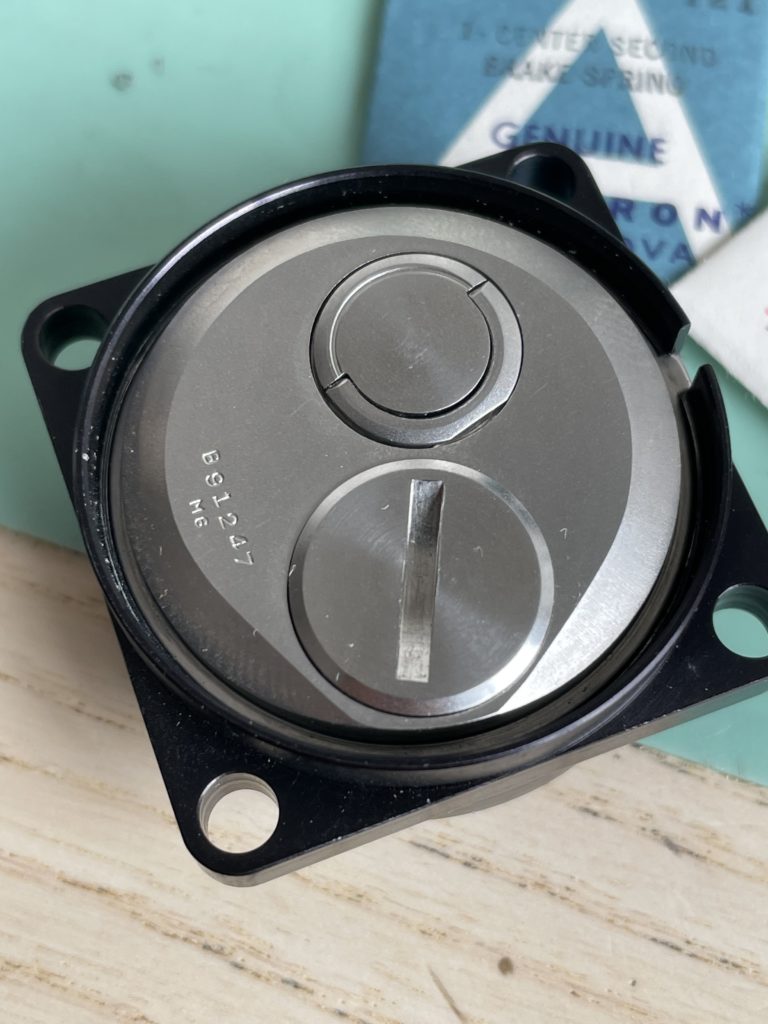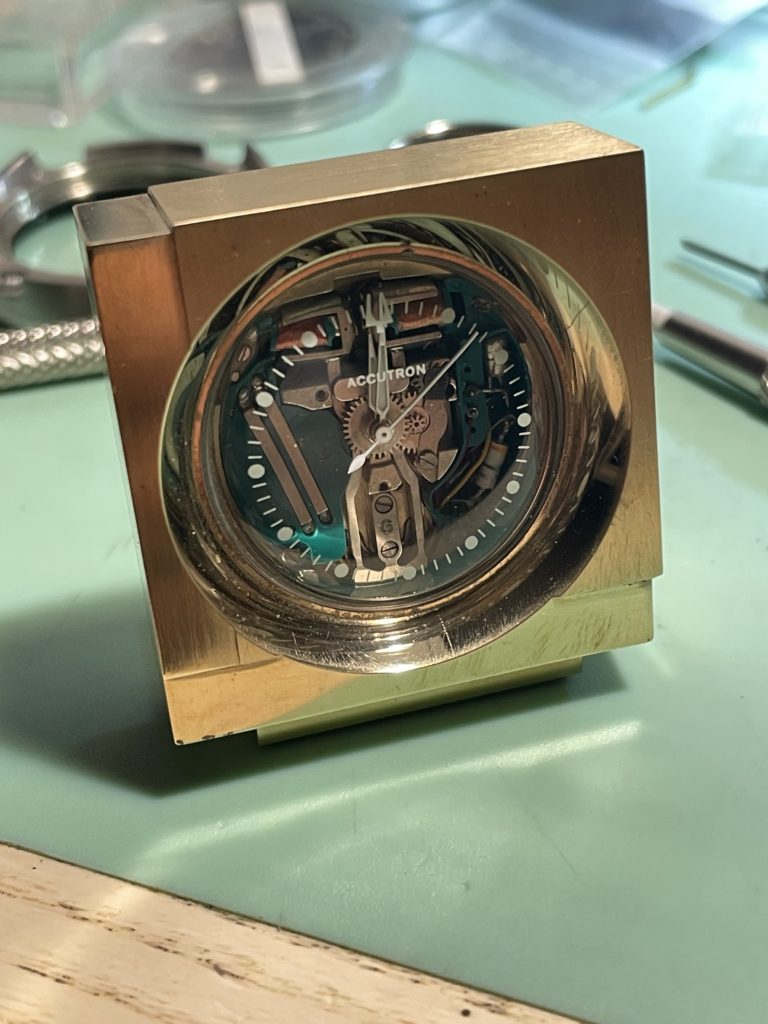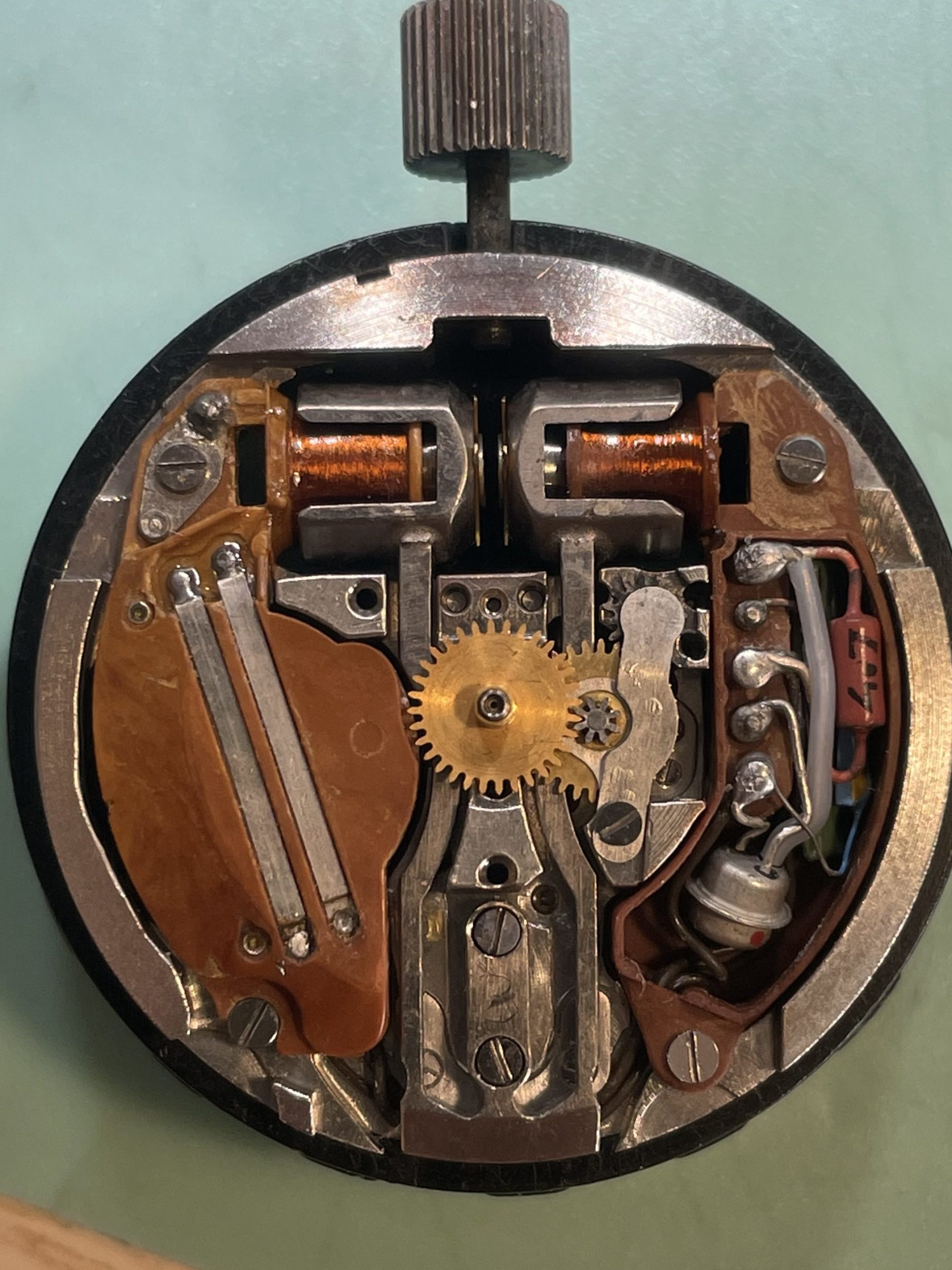
In the 60s, Bulova developed a new kind of watches : the tuning fork movements.
In a mechanical watch, time is kept by the balance, oscillating one to four times per second depending on models. Energy is stored in the mainspring, wound up either manually or by the auto winding system. The balance acts as a regulator to transfer this energy into the gear train and the hands.
With a tuning fork watch, the oscillating frequency is 360 Hz (oscillations per second)1. This much smaller part of the second is the key to greater accuracy (quartz oscillate at 32 kHz).
Vibration is powered by a battery, through an electro-magnet system. A feedback coil triggers a transistor and the whole circuit keeps humming. Every time the tuning fork moves outwards, a very small index finger pushes the index wheel – a small gear with 320 teeth – and this converts into a rotating action. The gear train then divides this into the proper number of turns for seconds, minutes and hours.
Until quartz happened and ended their reign, tuning fork watches and clocks were the reference in terms of accuracy. These still are very accurate to this day, and have become more and more popular.



- 360 Hz for most models, although some hum at 440 or even 720 Hz ↩︎
